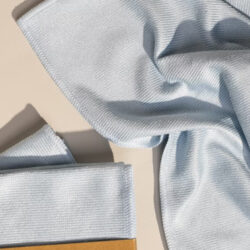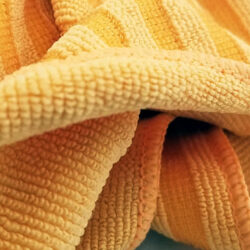As a professional house cleaner with years of experience, I’ve witnessed firsthand the remarkable benefits of using microfiber cleaning supplies. Let me share my insights and recommendations to fellow cleaners seeking superior results and efficiency in their cleaning routine.
Microfiber cloths, mops, and dusters have become indispensable tools in my cleaning arsenal, and for good reason. Unlike traditional cleaning materials, microfiber is engineered with ultra-fine fibers that possess unique cleaning properties. These fibers are highly absorbent, trapping dirt, dust, and bacteria more effectively than cotton or paper towels. When compared to traditional options, microfiber offers several distinct advantages that elevate the quality of cleaning outcomes and streamline the process.
Firstly, let’s discuss microfiber cloths. These versatile tools excel in various cleaning tasks, from wiping countertops and surfaces to polishing glass and mirrors. I’ve found that microfiber cloths deliver streak-free results with minimal effort, making them ideal for achieving a pristine finish on reflective surfaces. Moreover, their durability and reusability significantly reduce waste and expenses associated with disposable wipes or towels. By investing in high-quality microfiber cloths, cleaning businesses can achieve cost savings in the long run while minimizing their environmental footprint.
Next, let’s address microfiber mops. Traditional mop heads often fall short when it comes to effectively removing dirt and grime from floors, especially in high-traffic areas. In contrast, microfiber mop pads are designed to trap and lock particles, ensuring thorough cleaning and sanitation with each pass. I’ve experienced significant time savings by using microfiber mops, as they require fewer trips to empty and refill mop buckets, resulting in increased productivity during cleaning sessions. Additionally, the ability to launder and reuse microfiber mop pads prolongs their lifespan, reducing replacement costs and contributing to sustainable business practices.
When comparing the cost benefits of microfiber cleaning supplies to traditional options, the value proposition becomes clear. While the upfront investment in microfiber may be slightly higher, the long-term savings outweigh the initial expense. By eliminating the need for disposable cleaning materials and reducing labor hours spent on repetitive tasks, businesses can achieve significant cost efficiencies over time. Furthermore, the superior cleaning performance of microfiber translates to higher client satisfaction and retention, ultimately driving business growth and profitability.
While microfiber cleaning supplies offer undeniable benefits, it’s essential to consider whether the switch is suitable for every cleaning business or location. In my experience, businesses that prioritize quality, efficiency, and sustainability stand to gain the most from adopting microfiber technology. However, factors such as budget constraints, cleaning preferences, and client demographics may influence the decision to transition to microfiber. Ultimately, each cleaning professional must evaluate their unique needs and circumstances to determine the best approach for optimizing their cleaning practices.
The Main Advantages Of Using Microfiber For Your Cleaning Business
- Longevity: Microfiber cleaning supplies, such as cloths and mop pads, are highly durable and can withstand numerous wash cycles without losing effectiveness. This durability extends the lifespan of each microfiber product, reducing the frequency of replacements and saving money on purchasing new supplies.
- Reduced Waste: Unlike disposable cleaning materials like paper towels or wipes, microfiber cloths and mop pads can be laundered and reused multiple times. By eliminating the need for single-use products, cleaning businesses can significantly reduce waste generation and associated disposal costs.
- Efficiency: Microfiber’s unique cleaning properties, such as its ability to trap and lock dirt, dust, and bacteria more effectively than traditional materials, result in more efficient cleaning processes. With fewer passes required to achieve desired results, cleaners can complete tasks in less time, maximizing productivity and reducing labor costs.
- Less Chemical Usage: Microfiber’s exceptional cleaning power often eliminates the need for harsh chemical cleaners. By relying on microfiber alone or using minimal amounts of cleaning solutions, businesses can reduce their spending on expensive chemical products while promoting safer and healthier cleaning practices.
- Lower Water Consumption: Microfiber cleaning requires less water compared to traditional cleaning methods, as the absorbent fibers effectively pick up moisture without excessive saturation. By conserving water usage during cleaning operations, businesses can reduce utility costs associated with water consumption and wastewater disposal.
- Client Retention and Referrals: The superior cleaning performance and streak-free results achieved with microfiber often lead to higher client satisfaction and retention rates. Satisfied clients are more likely to recommend the cleaning service to others, resulting in increased business opportunities and revenue growth without additional marketing expenses.
- Time Savings: Microfiber’s efficiency in capturing dirt and debris means cleaners can complete tasks more quickly. This time savings translates to higher productivity during each cleaning session, allowing businesses to serve more clients or allocate resources to other revenue-generating activities.
- Healthier Indoor Environments: Microfiber’s ability to trap and remove microscopic particles, including allergens and bacteria, contributes to healthier indoor environments. Reduced allergen levels and improved air quality can lead to fewer employee sick days and increased productivity, ultimately saving money for the business.
- Lower Maintenance Costs: Unlike traditional cleaning equipment that may require frequent repairs or replacements, microfiber tools are generally low-maintenance and resistant to wear and tear. This reduces the need for costly repairs or replacements, further contributing to overall cost savings for the cleaning business.
- Enhanced Brand Reputation: By incorporating environmentally friendly and sustainable cleaning practices using microfiber, cleaning businesses can enhance their brand reputation and attract eco-conscious clients. This positive brand image can lead to increased customer loyalty and competitive advantage, ultimately driving revenue growth and profitability.
Possible Risks or Downsides To Using Microfiber
While microfiber cleaning supplies offer numerous benefits for businesses, there are some potential risks or downsides to consider:
- Initial Investment: Switching to microfiber cleaning supplies may require an initial investment in purchasing new equipment and supplies. While the long-term cost savings often outweigh this initial expense, businesses must budget accordingly to accommodate the upfront costs.
- Proper Training Required: To maximize the effectiveness of microfiber cleaning, employees may require training on the correct usage and maintenance of microfiber tools. Improper use or care could diminish the performance and longevity of the products, potentially offsetting the cost savings.
- Potential for Cross-Contamination: If not properly sanitized between uses, microfiber cloths and mop pads can harbor bacteria and other contaminants, leading to cross-contamination between different surfaces or areas. Businesses must establish and enforce strict cleaning protocols to minimize this risk.
- Compatibility with Cleaning Solutions: Some cleaning solutions may not be suitable for use with microfiber materials, as certain chemicals can degrade or damage the fibers. It’s essential for businesses to carefully select compatible cleaning solutions or opt for water-only cleaning methods to avoid potential damage.
- Lint Transfer: While microfiber is known for its ability to trap and hold dirt, it may also generate lint during use, especially if the fibers are of lower quality or improperly maintained. Businesses should invest in high-quality microfiber products and regularly inspect and maintain them to minimize lint transfer.
- Environmental Impact of Production: While microfiber is generally considered more eco-friendly than disposable cleaning materials, the production process for synthetic microfiber fabrics can still have environmental implications, including energy consumption and greenhouse gas emissions. Businesses should consider the environmental footprint of microfiber production when evaluating its sustainability.
- Limited Effectiveness on Certain Surfaces: While microfiber is highly effective on most surfaces, it may not perform as well on extremely textured or porous surfaces where debris can become trapped in crevices. In such cases, businesses may need to supplement microfiber cleaning with alternative methods or tools.
- Potential Allergen Sensitivity: In rare cases, individuals may experience skin irritation or allergic reactions to microfiber materials, particularly if they have sensitivities to synthetic fibers. Employers should be aware of any potential employee sensitivities and provide alternative cleaning options if necessary.
Overall, while there are some risks and considerations associated with using microfiber for business cleaning, proper training, maintenance, and adherence to best practices can help mitigate these concerns and ensure a successful transition to microfiber cleaning methods.
Microfiber cleaning supplies represent a game-changing solution for professional cleaners seeking to elevate their standards and streamline operations. With superior cleaning performance, cost efficiencies, and environmental benefits, microfiber has become the go-to choice for modern cleaning businesses. By embracing this innovative technology, cleaners can achieve exceptional results, enhance client satisfaction, and position themselves for long-term success in the competitive cleaning industry.




 Ordering Info
Ordering Info Customer Service
Customer Service Follow Us
Follow Us Search For Stuff
Search For Stuff Find Us
Find Us Call Us
Call Us Pay Us
Pay Us

Hi,
I found your blog via google by accident and have to admit that youve a really interesting blog 🙂
Just saved your feed in my reader, have a nice day 🙂
there are many great mlm businesses out there